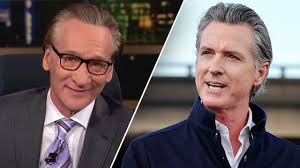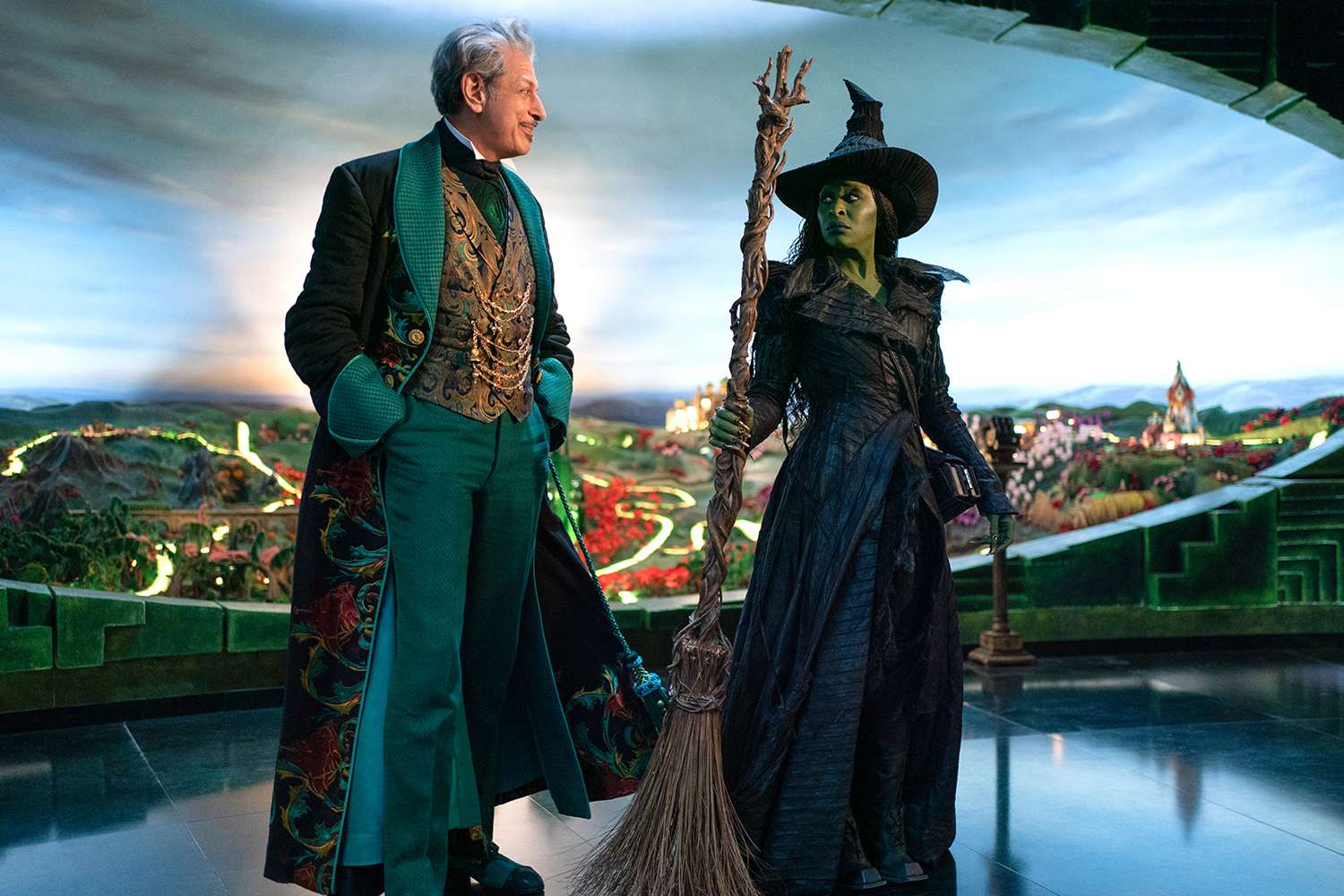In recent months, California Governor Gavin Newsom has found himself at the center of a growing political spectacle — not for a new piece of legislation or a policy rollout, but for his unusually bold and bombastic approach to political messaging. Newsom has taken to social media with a tone and cadence that feels less like the carefully measured rhetoric of a traditional Democratic leader and more like the provocative style of his longtime political foil, Donald Trump. The posts are loud, sarcastic, confrontational, and at times, downright absurd. And yet, they’re getting attention — and praise — from some unlikely sources.
On the August 22 episode of HBO’s “Real Time,” longtime political commentator and comedian Bill Maher addressed the phenomenon directly, offering a surprisingly favorable take on Newsom’s behavior. Maher, who has often criticized both parties for being out of touch or overly ideological, found something oddly refreshing in Newsom’s new strategy. “I’ve never seen a Democrat do this,” Maher told his panel. “I think it’s very funny.”
The key to understanding Maher’s praise lies in his broader view of American political culture. As he put it, “Don’t try to outsmart people. You have to out-stupid them.” It’s a biting critique of the political zeitgeist — a recognition that, in today’s media environment, being clever or well-informed is often less effective than being loud, bold, and emotionally provocative. Maher’s words, though intentionally sardonic, highlight a serious concern: the traditional tools of political discourse no longer carry the same weight in an era where entertainment and outrage dominate the news cycle.
Enter Gavin Newsom, a man often associated with progressive policies, climate change advocacy, and polished public appearances. For years, he’s been seen as a rising star in Democratic politics, with whispers of a future presidential run growing louder. But lately, instead of playing it safe and leaning into the role of a statesman, Newsom has embraced something far more performative — and arguably more effective. His recent posts on X (formerly Twitter) don’t read like official government statements. They read like internet memes crafted to poke the bear of conservative media.
On August 20, for example, Newsom’s press office posted: “WOW! FOX NEWS CAN’T STOP TALKING ABOUT ME (GAVIN C. NEWSOM), AMERICA’S FAVORITE GOVERNOR!!! TONIGHT THEIR ENTIRE PRIMETIME LINEUP WAS ABOUT ME! JESSE WATTERS KEPT CALLING ME ‘DADDY’ (VERY WEIRD, NOT INTERESTED, BUT THANK YOU!)” The tone is unmistakable — it’s parody, satire, trolling — and yet it’s coming from a sitting governor. The post reads less like policy communication and more like the antics of an internet-savvy teenager goading an online rival.
Then, the very next day, Newsom took a swipe at conservative outrage over the new Cracker Barrel logo, writing, “KEEP YOUR BEAUTIFUL LOGO!!! THE NEW ONE LOOKS LIKE CHEAP VELVEETA ‘CHEESE’ FROM WALMART, THE PLACE FOR ‘GROCERIES’ (AN OLD FASHIONED TERM)!!! ‘FIX IT’ ASAP! WOKE IS DEAD!! THANK YOU FOR YOUR ATTENTION TO THIS MATTER. — GCN.” Again, the message is absurd on its face, but that’s the point. It reflects a kind of meta-commentary on the performative outrage cycle that drives much of political discourse today.
For someone like Newsom, this is both a risky and potentially strategic move. In recent interviews, including a conference call with party leaders reported by USA TODAY, Newsom described this shift in tone as part of a larger plan to ignite what he called “a renewed sense of purpose” among Democratic voters. “This is a new Democratic Party,” he said. “This is a new energy out there all across this country, and we are going to meet fire with fire.”
That idea — “meeting fire with fire” — is a significant departure from the more buttoned-up, technocratic image many Democrats have tried to maintain in contrast to the chaos of Trump-era politics. But it’s not without precedent. In fact, it’s directly inspired by the approach Trump himself has used to dominate media cycles for nearly a decade. Trump’s ability to steer conversations, generate outrage, and command attention — even through seemingly trivial posts or bizarre statements — has proven to be an undeniable political weapon.
And Newsom, it seems, is now wielding a similar weapon — only with a touch of parody, and aimed squarely back at the former president and his allies.
Of course, Trump has noticed. At an August 22 event in the Oval Office, the former president didn’t hold back. “I know Gavin very well,” Trump told reporters. “He’s an incompetent guy with a good line of (bull).” It was a classic Trump insult — dismissive, crude, and personal. But the fact that Trump even addressed Newsom’s posts shows that the governor’s strategy is working, at least in terms of getting under his opponent’s skin.

This whole exchange — Newsom’s trolling, Trump’s response, and Maher’s praise — reflects a deeper truth about where American politics currently stands. The battle isn’t just over policy anymore; it’s over tone, attention, and cultural relevance. Voters are no longer just watching debates or reading op-eds — they’re scrolling through social media feeds where style often trumps substance. In that space, being outrageous or humorous or simply loud can sometimes matter more than being correct or informed.
Maher’s commentary adds another layer to the conversation. During the same episode of “Real Time,” he recounted a story about having dinner with Trump at the White House — an event arranged by none other than musician Kid Rock. According to Maher, he came prepared for a confrontation, even bringing a list of nearly 60 insults that Trump had tweeted about him over the years. But instead of a fiery clash, Maher described the dinner as unexpectedly pleasant. “The guy I met is not the person who the night before the dinner… tweeted a bunch of nasty crap about how he thought this dinner was a bad idea and what a deranged (expletive) I was,” Maher recalled. “I read it and thought, oh, what a lovely way to welcome someone to your house.”
That anecdote is telling. It reveals how much of the political performance we see — especially online — is just that: performance. Trump, who has built his brand on bombast and insult, can be disarmingly cordial in person. Maher’s takeaway seemed to be that, while we may loathe each other in public, the private reality is often much more mundane.
But Maher’s story also underscores the absurdity of our political moment. Serious political conversations are now tangled up in personal feuds, social media theatrics, and entertainment industry crossovers. A late-night comedian dining with a former president, thanks to an invitation from Kid Rock, isn’t just a quirky tale — it’s emblematic of the blurring lines between politics and spectacle.
Newsom appears to be leaning into this new reality with eyes wide open. He’s not trying to “outsmart” Trump in the traditional sense; he’s trying to outmaneuver him in the arena that now matters most: the online battlefield of public perception. By co-opting Trump’s own tactics — albeit with a more ironic, self-aware twist — Newsom is attempting to energize a voter base that might otherwise feel disengaged or disillusioned.
And make no mistake, it’s a calculated risk. There’s always the danger that adopting the same tactics as your opponent could blur the lines too much, turning politics into little more than a shouting match where no one wins. But there’s also the potential for redefining what effective political communication looks like in the digital age. If Newsom can channel his performative side without losing the substance that has defined much of his career, he might tap into a powerful formula — one that resonates with younger voters who are more fluent in memes than in manifestos.
Maher’s support for this approach, while surprising to some, actually fits neatly into his long-standing critique of political correctness and performative wokeness. He’s long argued that Democrats need to be less afraid of offending and more willing to engage in cultural battles with humor and boldness. In Newsom, he may see a version of that — someone who isn’t afraid to get in the mud, but who still holds progressive values.
What remains to be seen is how this strategy will play out on a national stage. Newsom has repeatedly denied any plans to challenge President Biden in 2024, but speculation about a 2028 run continues to swirl. If he does throw his hat in the ring, his current approach may serve as a testing ground for how Democrats can fight fire with fire — without getting burned.

For now, though, Newsom’s posts are doing what they’re supposed to do: driving conversation, baiting his opponents, and, perhaps most importantly, entertaining the public in a political landscape that increasingly resembles a reality show. Whether or not this strategy proves effective in the long term, one thing is certain: the old rules no longer apply.
In this new era, where attention is currency and politics is performance, figures like Newsom, Trump, and even Maher understand that the message matters less than the moment. And in capturing that moment — whether with a sarcastic tweet or a primetime jab — Newsom may be paving the way for a new kind of Democratic playbook, one that isn’t afraid to laugh, troll, and punch back.










